Until very recently, it was hard to find a good, let alone fair deal for the latest Radeon RX 6000 series. However, things have changed, and now we can not only find them reasonably priced, but with the next series around the corner comes a guaranteed further drop in price in the foreseeable future. But now that we can, we have to ask ourselves, “are they worth it in 2023?”
The previous generation (RX 5000 series) has enough potential to go through almost any AAA game and have a great gaming experience. But, performance is not the only criterion when choosing a GPU, as price plays a huge role. In this article, I’ll be comparing the 6700 XT vs 5700 XT, two high-end cards that are great 1080p and 1440p performers but lack in 4K performance.
6700XT vs 5700XT – Quick Comparison

| 6700 XT | Specs | 5700 XT |
|---|---|---|
| Navi 22 XT (215-127000006) | GPU | Navi 10 XT (215-0917210) |
| PCIe 4.0 x16 | Interface | PCIe 4.0 x16 |
| 2,560 | GPU Cores | 2,560 |
| 160 | TMUs | 160 |
| 40 | RT Accelerators | N/A |
| 2,321 MHz | Base Clock | 1,605 MHz |
| 2,424 MHz | Game Clock | 1,755 MHz |
| 2,581 MHz | Boost Clock | 1,905 MHz |
| 12 GB GDDR6 | Memory | 8 GB GDDR6 |
| 2,000 MHz (16 Gbps effective) | Memory Speed | 1750 MHz (14 Gbps effective) |
| 384 GB/s | Bandwidth | 448.0 GB/s |
| 192-bit | Memory Bus | 256-bit |
| 230 W | TDP (Founders Edition) | 225 W |
| 650 W | Required PSU (Founders Edition) | 550 W |
| 1x HDMI 2.1 3x DisplayPort 1.4a | Outputs | 1x HDMI 2.1 3x DisplayPort 1.4a |
AMD
Advanced Micro Devices, better known as AMD, is a giant in the IT scene. It started out in Silicon Valley over 50 years ago. It produces CPUs, motherboard chipsets, embedded processors, GPUs, and FPGAs for servers, workstations, personal computers, and embedded system applications. Most know them best for their CPUs and GPUs.
RX 6700 XT
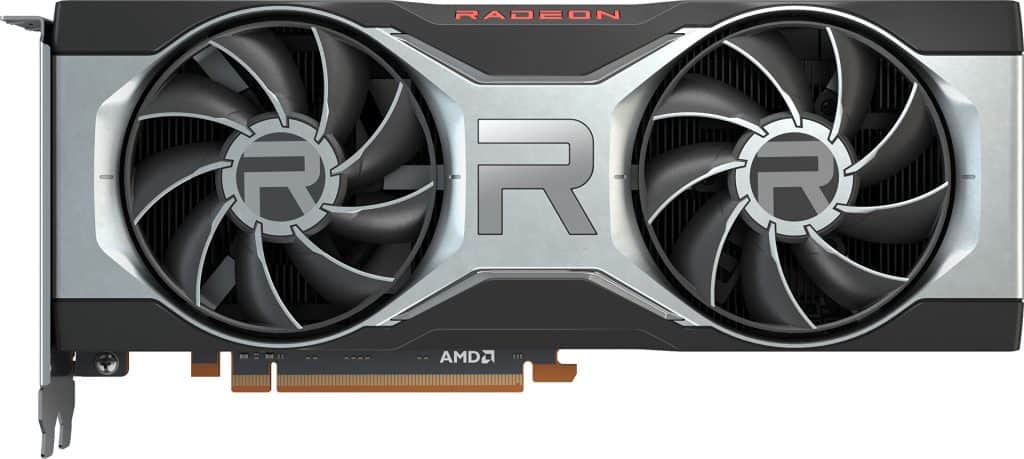
At first glance, the Radeon RX 6700 XT doesn’t seem that much better than the competition, with the same number of cores, TMUs, and a similar TDP. However, its higher clock speeds, 50% larger VRAM, the addition of ray tracing tech, and the new and improved RDNA 2 architecture are what sets it apart. It also has better performance results, according to several sources.
Pros:
- Lower price (Q3 2022)
- Larger VRAM
- Faster VRAM
- Higher clock speeds
Cons:
- Worse @1080p
- Not great @4K
RX 5700 XT
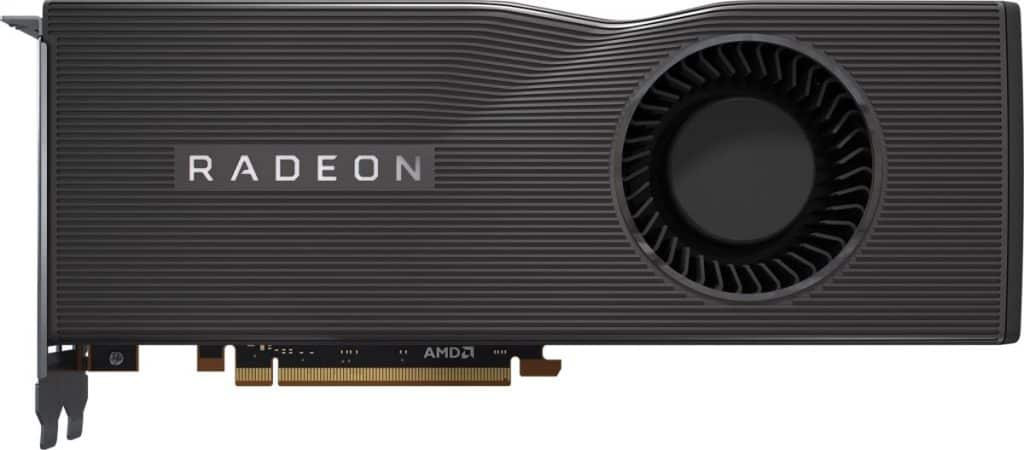
Even though the Radeon RX 5700 XT was released more than three years ago, it’s still a great card. It’s advertised as being able to handle all modern AAA games, even at 4K. However, some users have reported (as for most AMD cards) that it overheats easily, which brings EFps way down, making it almost unusable at any resolution.
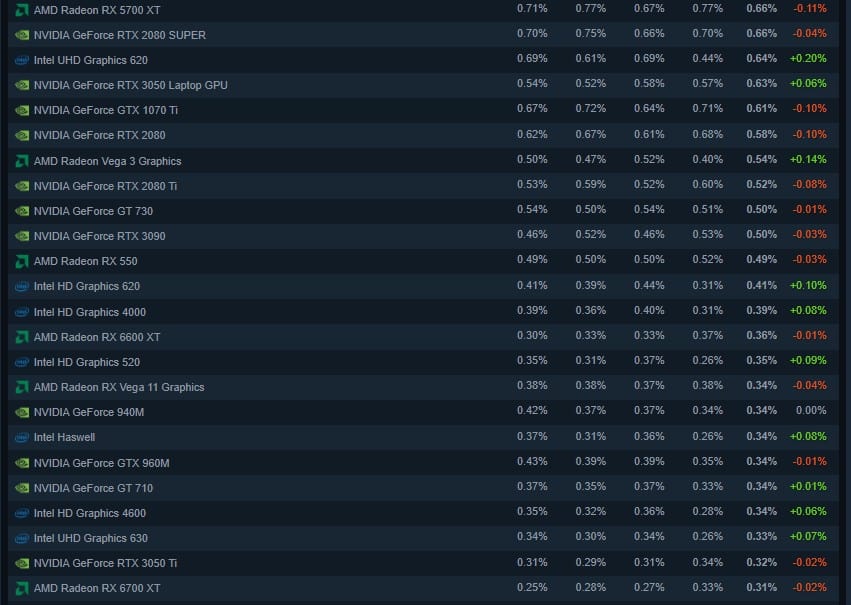
Regardless, it’s used more than 100% by gamers (according to Steam) than the 6700 XT, though this can be attributed to the 6700 XT’s high prices and low availability following the RX 6000 series’ release.
Pros:
- Better @ 1080p
- Handles 1440p very well
- Lower TDP
- Higher bandwidth
Cons:
- Higher price (Q3 2022)
- Not great @4K
5700 XT vs 6700 XT – Key Specifications
Architecture
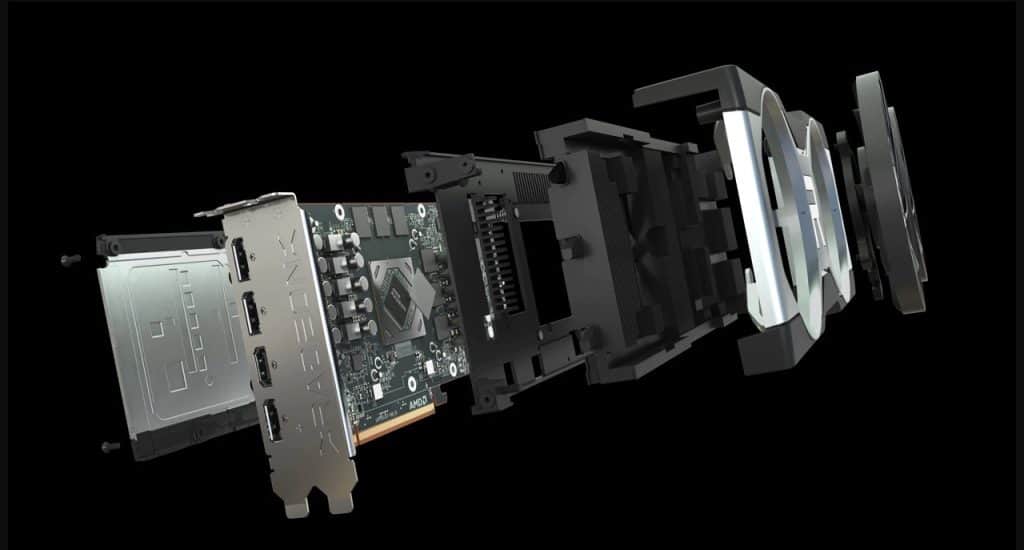
RDNA (1) was already a significant upgrade compared to what came before (GCN). It introduced the workgroup processor (WGP) instead of compute units (CU). Each RDNA (1) WGP contained two CUs. One of these RDNA WGPs is equal to half of a WGP in RDNA 2. Hence the performance boost.
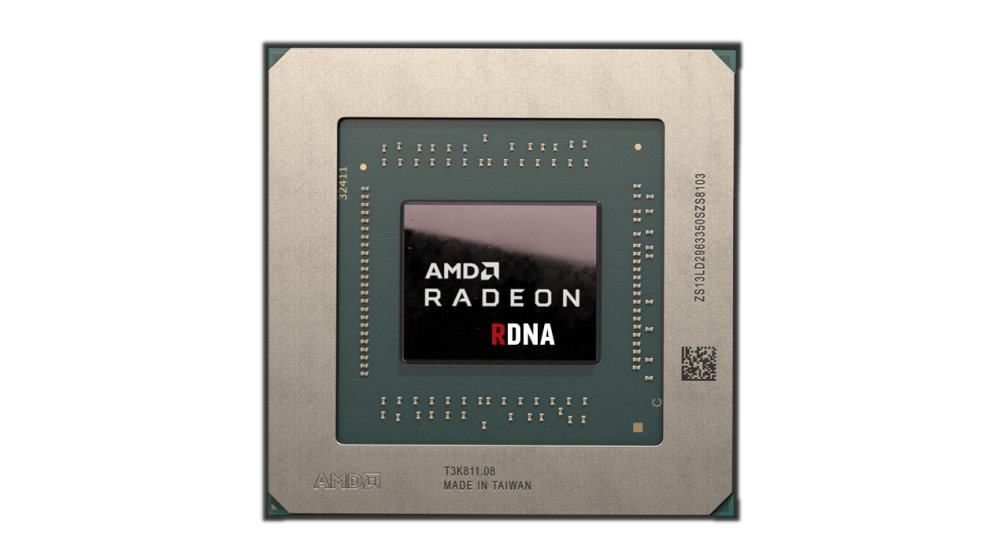
The 6700 XT and the 5700 XT are both based on the RDNA architecture, though the former is based on the new and improved (“refreshed” as AMD put it) RDNA 2, offering an advertised “65% more performance per Watt” compared to RDNA (1). That’s how you get higher clock speeds on the same number of cores.
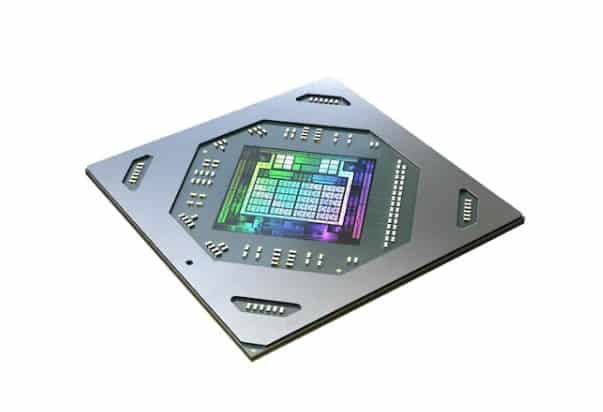
RDNA 2 introduced some new tech that gave it its edge over its predecessor. Smart Access Memory is one. SAM allows your CPU to access the entirety of your VRAM instead of the 256-bit blocks accessible on earlier GPUs. Another feature is AMD infinity Cache which enables higher bandwidths.
Winner: RX 6700 XT
Clock Speeds & Overclocking
Clock speed is the frequency at which your GPU operates – the faster, the better. “Base clock” is the default speed, though not the lowest (they can sometimes drop under it when idle). When pushing your card to the limit, it sometimes needs an extra nudge in speed and performance. That’s where “boost clock” comes in. VRAM also has a specific clock speed at which it operates.
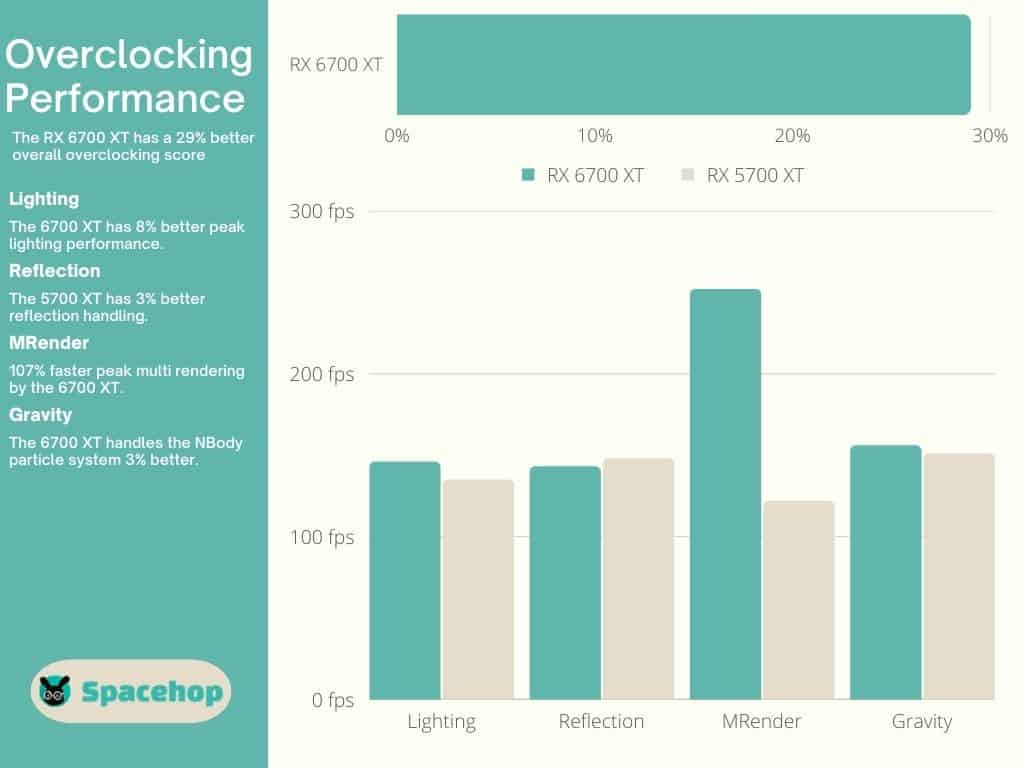
In this case, the 6700 XT beats the 5700 XT with a base clock of 2,321 MHz compared to 1,605 MHz and a boost clock of 2,321 MHz compared to 1,905 MHz. Keep in mind that these cards have the same number of cores, which is a significant improvement. In addition, the 6700 XT also has a faster VRAM clock speed at 2,000 compared to 1,750 MHz in the 5700 XT.
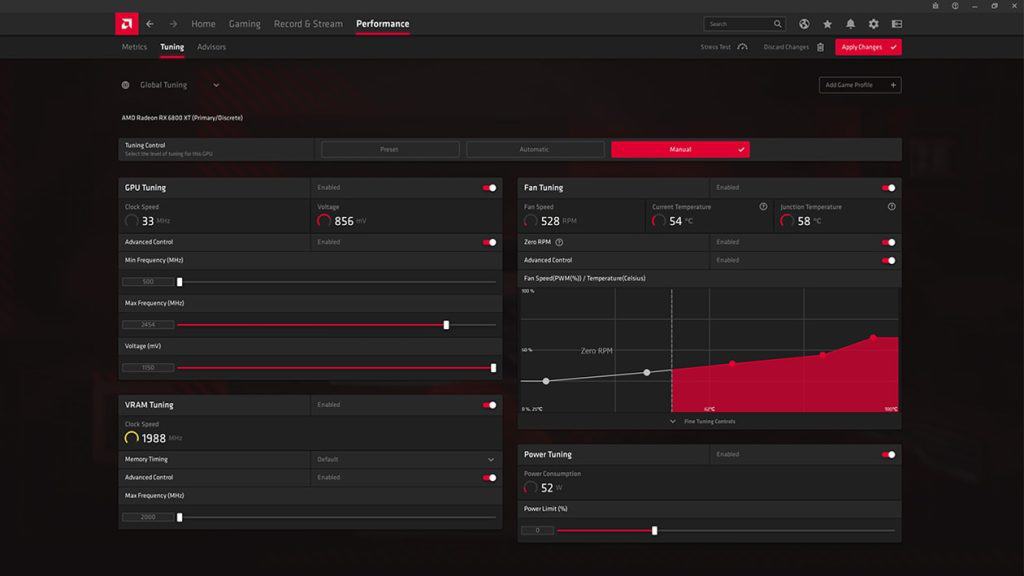
AMD offers a third clock speed known as “Game Clock,” which is essentially the calculated average clock speed you should expect when gaming. If none of these seem enough, you can always reach for higher clock speeds via overclocking. I recommend using AMD software for AMD cards, but many people opt for MSI Afterburner as well.
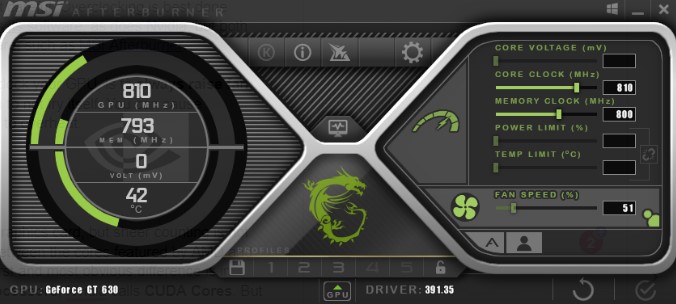
You can overclock your GPU (and CPU, for that matter) by changing your GPU settings using dedicated software. You can change VRAM speed, core speed, voltage, fan speed, etc. on most cards, these two included. AMD cards are considered great overclockers, just remember to raise fan speeds to avoid overheating your card.
Winner: RX 6700 XT
Also Read: Complete Undervolting Guide for your CPU and GPU [SAFE]
Cores
At the core of any graphics card is the Graphics Processing Unit, or GPU — a parallel processor with thousands of cores. And, it’s no mystery why the number of cores is so high. They have to handle performance-heavy games and 3D worlds, 4K gaming, ray tracing, physics, content from Unreal Engine, plus much more, and all of your input as a player.
Both the 6700 XT and the 5700 XT have the same amount of cores — 2,560. Yet, merely counting them is not enough. Achieving the performance needed to keep you satisfied with your EFps depends on how your cores are utilized. That’s where shaders come in.
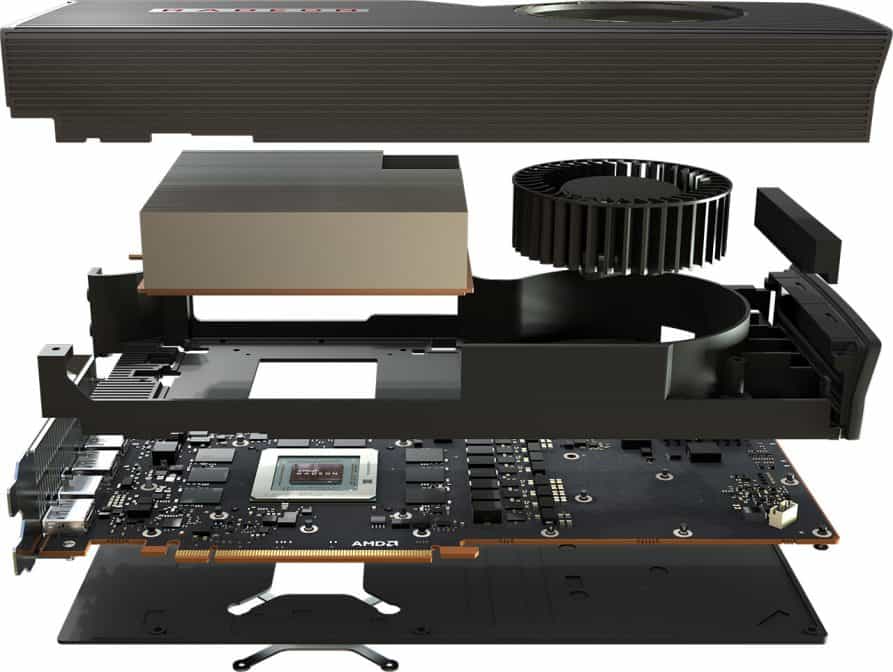
Shaders
Shaders are generic programs that once handled lighting and shadows but have also evolved to handle many other aspects critical to 3D rendering. There are two types of shaders used in the 6700 XT and 5700 XT, Primitive and Mesh shaders. RDNA 2’s Mesh shaders allow the GPU to handle more complex algorithms, transferring more of the workload to your GPU away from your CPU.
Ray Tracing
The 5700 XT was released before AMD got into ray tracing hardware and supports software-based ray tracing. The 6700 XT is from the RX 6000 series, AMD’s first series to offer hardware-based ray tracing accelerators. These aren’t dedicated cores as you get with Nvidia, but they get the job done well enough, especially since ray tracing has not yet been massively utilized in games.
TMUs
Texture Mapping Units, or TMUs, are low-level components dedicated to mapping textures in virtual 3D environments — another critical part of video game rendering. Both the 6700 XT and the 5700 XT have 160 TMUs each. I’m betting that RDNA 2 has better TMUs.
Winner: RX 6700 XT
VRAM & Memory Specs
Both cards are paired with GDDR6 VRAM. The 6700 XT uses 12 GB on a 192-bit memory BUS, offering a bandwidth of 384 GB/s. The 5700 XT uses 8 GB on a 256-bit BUS, offering an impressive bandwidth of 448 GB/s. Even though it falls short here, the 6700 XT has a larger VRAM and boasts SAM, AMD Infinity Cache, and a higher memory clock (2,000 vs 1,750 MHz).
Winner: RX 6700 XT
Also Read: VRAM vs RAM: What are the key differences?
Performance
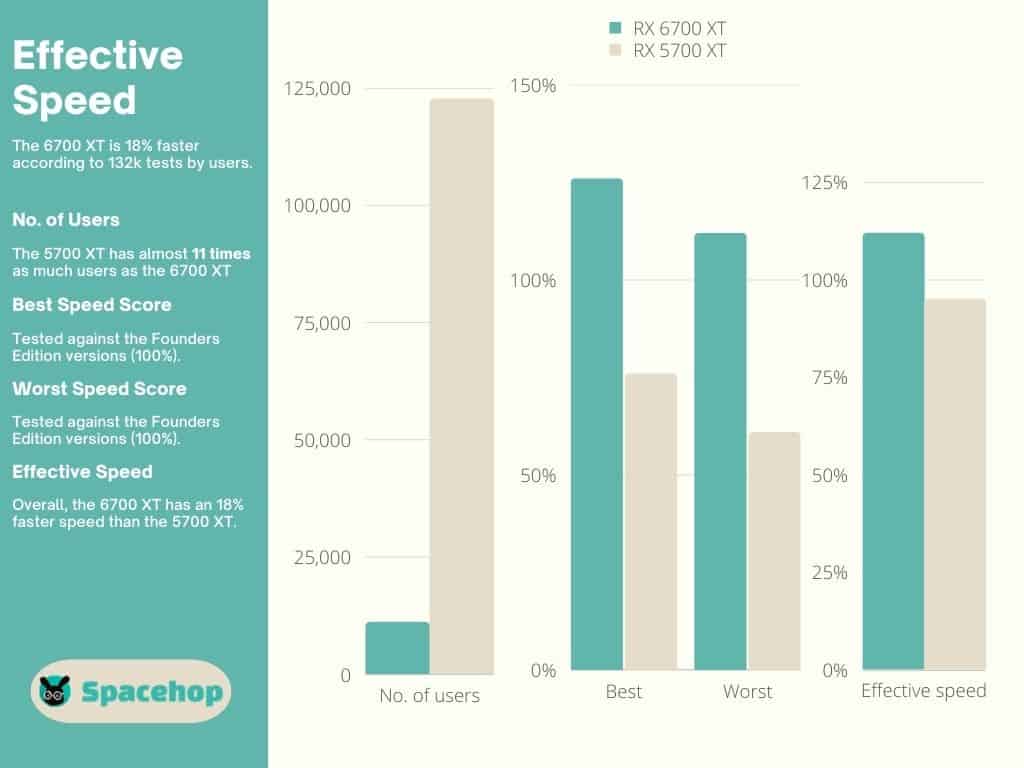
Performance is in favor of the 6700 XT by an average of 18% according to user benchmarks but reaches higher in some cases. That’s a percentage that I think justifies the MSRP difference. Then I got into testing.
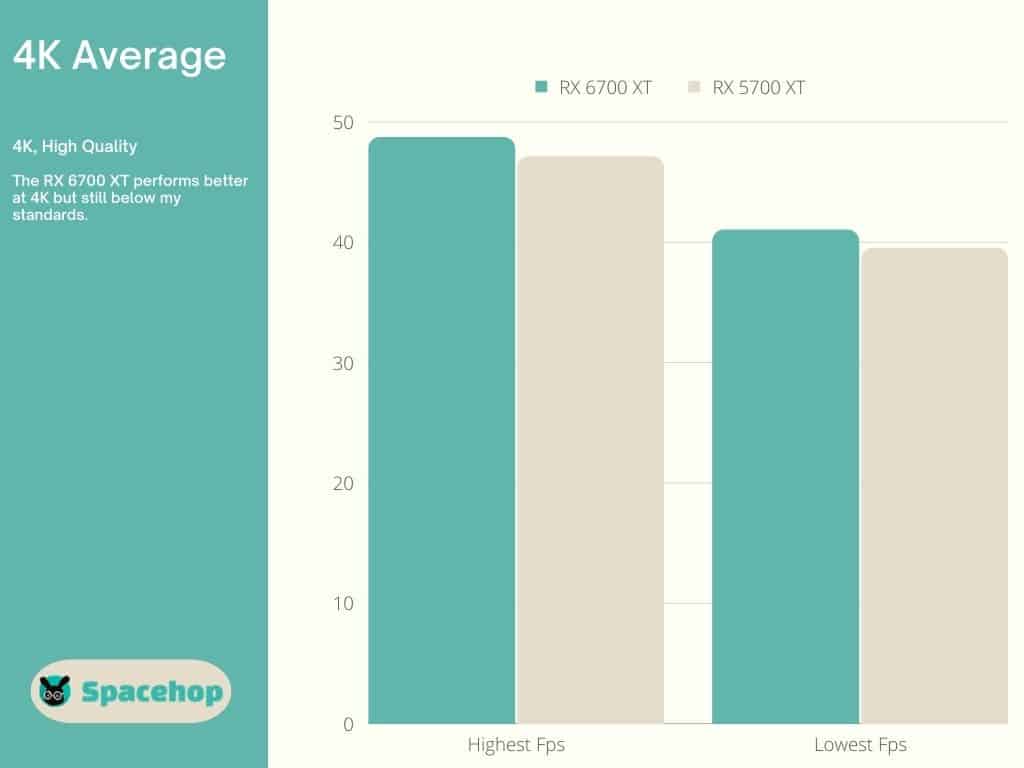
A 9-game average confirmed the 6700 XT is the better performer, but I found 4K gaming to be pretty bad on both cards, with Fps dropping as low as 20 in some games, averaging out at 48 Fps (6700 XT) and 47 Fps (5700 XT).
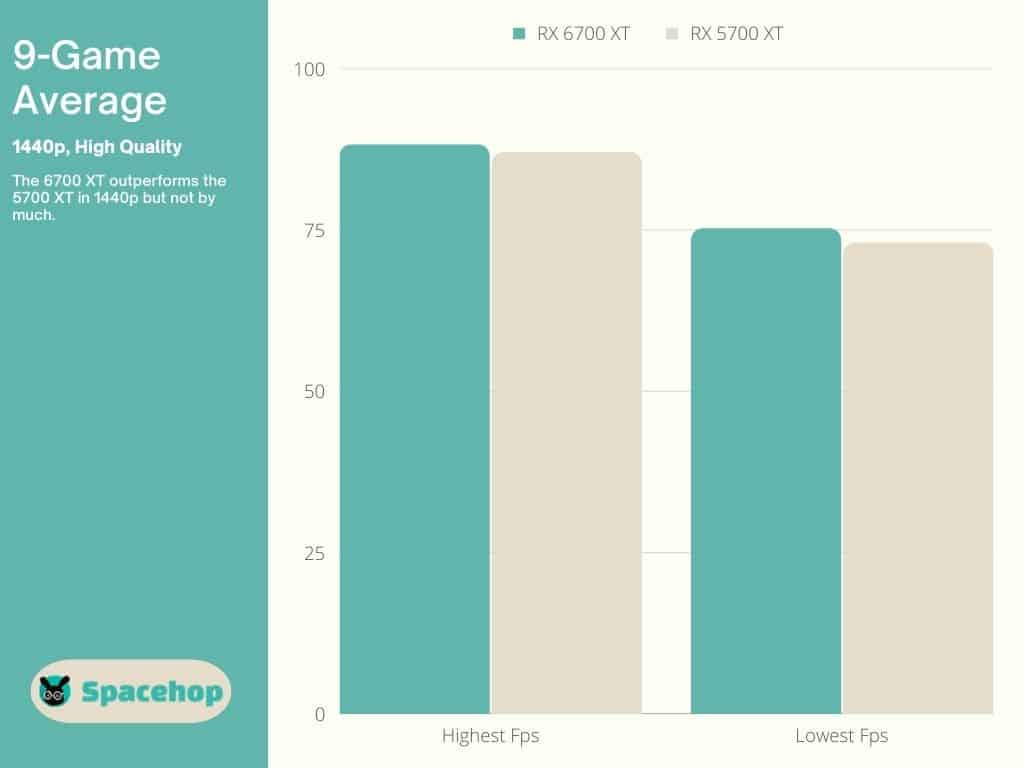
I consider anything under 60 Fps a bad experience when gaming. I can’t stand stuttering, so naturally, 20, 30, 40, or even 50 Fps is not enjoyable by my standards. The 6700 XT offers a great average high of 114 Fps at 1440p, and the 5700 XT does pretty well with 88 Fps. At 1080p, the averages rise to 122.5 Fps for the 6700 XT, and the 5700 XT beats it here with 123.5 Fps.
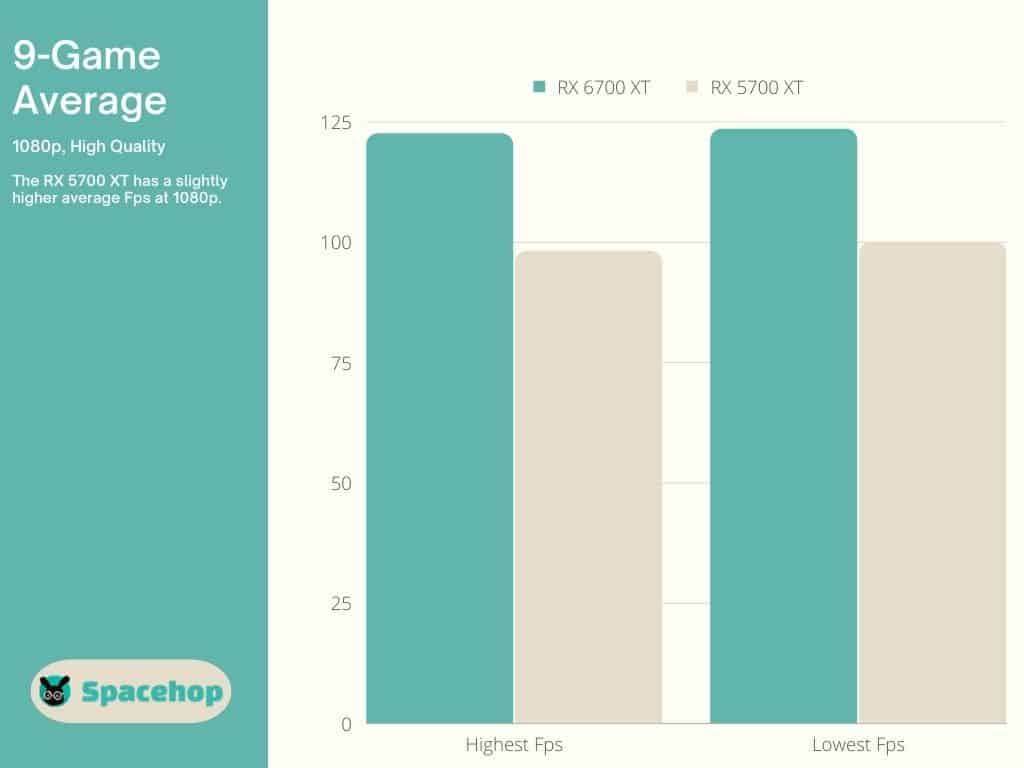
Winner: RX 6700 XT
Related Read: Best CPUs for RX 5700 XT and RX 5700
Connectivity
Both cards need a PSU connection, and both use a strange combination of 1x 6-pin plus a 1x 8-pin connector (couldn’t they have just picked one?!). You’ll most likely need an adaptor for this setup. Both cards have the same outputs as well, with one HDMI 2.1 port and three Display Ports each.
Winner: Draw
TDP
Your GPU is a subsystem, and every subsystem has a TPD or Thermal Design Power. It’s the maximum amount of power (in Watts) that that subsystem is allowed to draw from your PSU. The 6700 XT Founders Edition (FE) uses 230 W and requires a 650 W PSU. These numbers fluctuate depending on the manufacturer and version of the card. The 5700 XT FE uses a pretty similar 220 W.
TDP can also refer to the maximum heat a subsystem can handle. AMD cards have a limit of 230°F (110°C), much above the 154.4°F (68°C) average of the 6700 XT when under load (users claim higher numbers). The 5700 XT averages higher under load, with temperatures reaching +176°F (80°C). Either way, if a GPU ever hits the 230°F junction point, it will start to throttle performance to reduce heat.
Winner: RX 5700 XT
6700 XT vs 5700 XT – Standout Features
Ray Tracing Accelerators
The 5700 XT has ray tracing capabilities via software, while the 6700 XT has Ray Tracing Accelerators. In this case, hardware beats software.
6700XT vs 5700XT – Pricing & Availability
The RX 6700 XT FE had an MSRP of $479 upon release. The 5700 XT FE was priced at $399 upon release. You won’t find either on sale except pre-owned. And you can expect a lot more pre-owned cards to hit the market very soon due to drastic changes in the crypto mining world. Nevertheless, I wouldn’t risk purchasing a pre-owned mining card just to save money.
That said, all that’s left is to look at third-party variants of both cards, and thankfully, prices are dropping. You can now grab an ASUS DUAL RX 6700 XT well below the MSRP or an MSI Gaming RX 6700 XT also below the MSRP. This GIGABYTE EAGLE variant is still priced over the MSRP, for example, but I expect that to drop as well.
The 5700 XT is older, and less available but still sporting some crazy prices. This Sapphire Nitro+ variant is priced 25% above the MSRP, while this Sapphire Nitro+ is priced 50% over the MSRP, and the craziest of all is the MSI Gaming variant, priced 100% over MSRP. This GIGABYTE Gaming version is the only one priced near the MSRP, though still above it.
Conclusion
If I were choosing for myself, I’d skip every variant of the RX 5700 XT and go for the 6700 XT. It offers better performance, costs less on average, and has some great improvements compared to the 5700 XT. If we’ve proven anything in this 6700 XT vs 5700 XT comparison, it’s that the 5700 XT is not the card to buy in 2023.